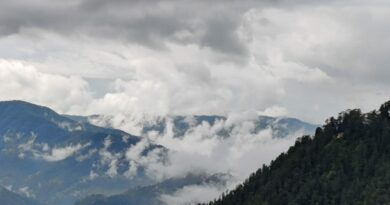Wildlife on the Rise: Himachal’s Forests Tell a Story of Hope—and New Challenges
In the quiet forests and rugged mountains of Himachal Pradesh, a silent success story is unfolding. Years of dedicated conservation efforts are now bearing fruit, with the state witnessing a remarkable rise in the populations of leopards and Asiatic black bears—a sign that nature, when protected, can thrive.
According to the Wildlife Department, the leopard population has more than doubled in just five years. From an estimated 400–450 leopards in 2019–20, the number rose to 511 in 2024, and now stands at 1,114 in 2025. That’s roughly two leopards for every 100 square kilometers—a powerful indicator of a healthier ecosystem.
The story is similar for Asiatic black bears. Their numbers have grown from 450–480 in 2019–20 to 835 in 2025. Officials credit this growth to stricter protection laws, better monitoring, and awareness campaigns that have helped communities understand the importance of living in harmony with wildlife.
Meanwhile, the elusive snow leopard, a symbol of the high Himalayas, continues to hold its ground. Found in the remote regions of Lahaul-Spiti and Kinnaur, their population remains stable—estimated between 44 and 51, with some studies suggesting up to 73. For conservationists, this stability is a quiet victory, reflecting a balanced and undisturbed high-altitude ecosystem.
But with this success comes a new challenge: coexistence.
As leopard and bear populations grow, so do encounters with humans. Recent data shows that over 30% of human-wildlife conflict cases involve leopards, and nearly 19% involve bears. Leopards often prey on livestock, while bears venture into orchards and villages in search of food.
Experts say the next phase of conservation must focus on living alongside wildlife. This means expanding awareness programs, improving waste management to avoid attracting animals, strengthening monitoring in conflict-prone areas, and making compensation policies more responsive and fair.
Himachal’s forests are speaking—they’re telling a story of recovery, resilience, and the delicate balance between humans and the wild. The challenge now is to listen, adapt, and ensure that this success doesn’t turn into conflict, but into a model of peaceful coexistence.



